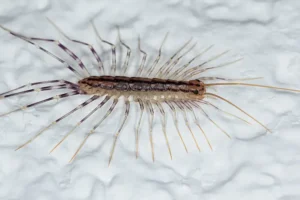The weather is starting to warm up, but the spring pests are still held at bay for a while. We thought that while the season is still a bit chilly, we could discuss another important aspect to home maintenance that pest control companies find very important. Today, we’ll take a look at the importance of foundation vents for crawlspaces.
If your home is on a crawlspace, then you’ve likely noticed vents around the foundation, even if you weren’t sure how they work. Foundation vents are important because, in East Tennessee, there’s plenty of humidity, particularly in the warmer months. That air moisture gets into your crawlspace as it comes up from the damp ground. If your crawlspace isn’t vented correctly, the moisture will likely lead to major problems under your house, ranging from standing water to mold or fungus on your support beams. Crawlspace mold is a common problem in this area, and one that will make your home quite difficult to sell.
Foundation vents help to improve crawlspace conditions by allowing the humidity to get out from under the house in the warm months and by holding good, dry heat in during the cold months. There are three types of foundation vents.
-
Manual Vents – These are your basic models that are probably installed on most houses when they’re built. They are fairly inexpensive, and you can purchase newer models or replacements at any home improvement store. They are fairly simple to install yourself. The disadvantage is that you are responsible for remembering them throughout the year. You should close them in the winter to hold in heat (which could lower your bills significantly) and open them as soon as the cold weather starts to break.
-
Temperature Vents – These vents are an upgrade from the manual version. They are still easy to find at a retail store, and you should be able to install them yourself if you don’t mind spending some time in the crawlspace. Their greatest advantage, however, is that they have a temperature-sensitive coil at their center that tells them when to open and close. Then, you don’t have to remember, and they can react to day-to-day weather conditions. Of course, they will cost a little more than manual vents.
-
Power Vents – These are for crawlspaces that have major problems with moisture. If you have standing water under your house, you likely need a power vent. They don’t just allow air to move in and out naturally; they have an attached fan that sucks fresh air in and, consequently, forces moist air out. The fan is controlled by a humidistat, which tells the unit to run when the air in the crawlspace is too moist. You can buy these, but they will be much harder for you to install alone. They often require special duct work to keep the air flowing effectively, and you will need an electrician to install a power source in your crawlspace to run the fan. These are obviously the most expensive of the three types, but fortunately, even particularly damp crawls are likely to need only one or two of these in addition to standard vents.
If you’re not sure what kind of foundation vents you have or if they are venting your crawl space well enough, you can always contact us here or call us today. Russell’s Pest Control can do a free inspection and can purchase and install vents if crawlspaces aren’t for you. We take crawlspace moisture very seriously since dampness attracts all kinds of insects, particularly termites. Need more information or clarification? You can respond to this post and ask any questions you might have, or you can always give us a call.
Why You Need Foundation Vents in Knoxville TN
Serving East Tennessee since 1971


